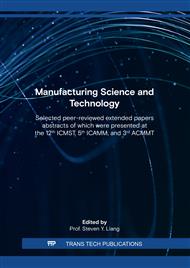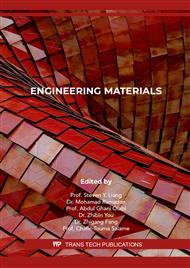[1]
Department of Highways. The roads under the supervision of the Department of Highways. (Online) Available on http://www.doh.go.th (2021).
Google Scholar
[2]
A.S. Brantley and T.G. Townsend: Leaching of pollutants from reclaimed asphalt pavement. Environmental Engineering, 16(2) (1999), 105-116.
DOI: 10.1089/ees.1999.16.105
Google Scholar
[3]
B. Huang, X. Shu and G. Li: Laboratory investigation of Portland cement concrete containing recycled asphalt pavements. Cement and Concrete Research, 35(10) (2005), 2008-2013.
DOI: 10.1016/j.cemconres.2005.05.002
Google Scholar
[4]
M.Z.H. Khan, S. Koting, H.Y.B. Katman, M.R. Ibrahim, A.M. Babalghaith and O. Asqool: Performance of high content reclaimed asphalt pavement (RAP) in asphaltic mix with crumb rubber modifier and waste engine oil as rejuvenator. Applied sciences, 11 (2021), 5226.
DOI: 10.3390/app11115226
Google Scholar
[5]
Q. Aurangzeb, I.L. Al-Qadi, H. Ozer and R. Yang: Hybrid life cycle assessment for asphalt mixtures with high RAP content. Conservation and Recycling, 83(2014), 77-86.
DOI: 10.1016/j.resconrec.2013.12.004
Google Scholar
[6]
A. Milad, A. Mohd Taib, A.G. F Ahmeda, M. Solla and N.I. Md Yusoff: A review of the use of reclaimed asphalt pavement for road paving applications. Jurnal Teknologi, 82(3) (2020), 35-44.
DOI: 10.11113/jt.v82.14320
Google Scholar
[7]
M. Zaumanis, R.B. Mallick and R. Frank: 100% recycled hot mix asphalt: A review and analysis. Resources, Conservation and Recycling, 92 (2014), 230-245.
DOI: 10.1016/j.resconrec.2014.07.007
Google Scholar
[8]
M. Zaumanis, R.B. Mallick and R. Frank: 100% Hot Mix Asphalt Recycling: Challenges and Benefits. Transportation Research Procedia, 14 (2016), 3493-3502.
DOI: 10.1016/j.trpro.2016.05.315
Google Scholar
[9]
S. Al-Oraimi, F. Hossam, and H.A. Hago: Recycling of reclaimed asphalt pavement in Portland cement concrete. Journal of Engineering Research. 6(1) (2009), 37-45.
DOI: 10.24200/tjer.vol6iss1pp37-45
Google Scholar
[10]
E. Mahmoud, A. Ibrahim, H. El-Chabib and V.C. Patibandla: Self-consolidating concrete incorporating high volume of fly ash, slag, and recycled asphalt pavement. International Journal of Concrete Structures and Materials. 7 (2013), 155-163.
DOI: 10.1007/s40069-013-0044-1
Google Scholar
[11]
B. Huang, X. Shu and E.G. Burdette: Mechanical properties of concrete containing recycled asphalt pavements. Magazine of Concrete Research. 58(5) (2006), 313-320.
DOI: 10.1680/macr.2006.58.5.313
Google Scholar
[12]
A. Modarres and Z. Hosseini: Mechanical properties of roller compacted concrete containing rice husk ash with original and recycled asphalt pavement material. Materials & Design. 64 (2014), 227-236.
DOI: 10.1016/j.matdes.2014.07.072
Google Scholar
[13]
ACI Committee 211: Standard Practice for Selecting Proportions for Normal, Heavyweight, and Mass Concrete. American Concrete Institute, Michigan, USA. (2009).
Google Scholar
[14]
ASTM C143: Standard Test Method for Slump of Hydraulic-Cement Concrete. ASTM International, West Conshohocken, PA, USA. (2019).
Google Scholar
[15]
ASTM C192: Standard Practice for Making and Curing Concrete Test Specimens in the Laboratory, ASTM International, West Conshohocken, PA, USA. (2019).
Google Scholar
[16]
ASTM C39: Standard Test Method for Compressive Strength of Cylindrical Concrete Specimens, ASTM International, West Conshohocken, PA, USA. (2018).
Google Scholar



